Bean plants are a popular choice for vegetable gardens due to their versatility and nutritional value. Growing beans is also fantastic for your soil because they’re nitrogen-fixing. But if your bean plants start wilting or dying, you’re going to want to find out why. So, what could be causing your bean plants to die?
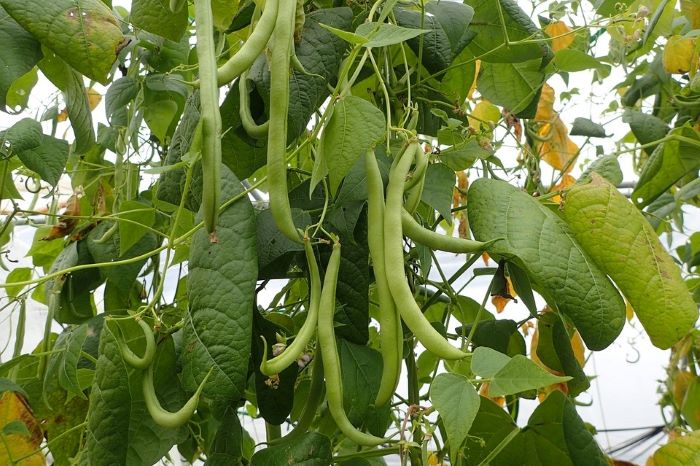
Table of Contents
Why Are My Bean Plants Dying?
The most likely causes behind your bean plants dying are, watering issues, soil conditions, too much or too little sunlight, a lack of nutrients, extreme temperatures, as well as certain pests and diseases.
If your bean plants are turning yellow and beginning to wilt, read on to find out why your bean plants are dying, and the solutions!
Related: Growing Beans: Planting and Harvesting Beans | 7 Reasons Why Your Green Bean Plants Are Turning Yellow | Cause of Bitter Green Beans
1. Watering Issues
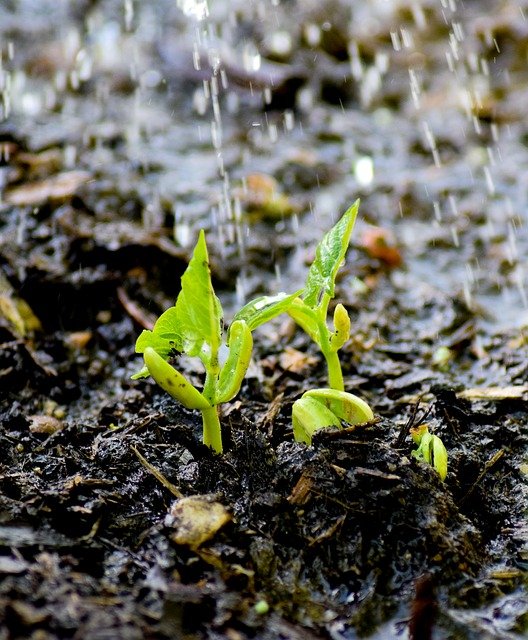
One of the most common reasons behind dying bean plants has to do with the amount of water your plant receives. Watering issues, whether it’s overwatering or underwatering, can have detrimental effects on bean plants causing them to die.
Overwatering
Overwatering happens when your bean plants get more water than they need. When your bean plants receive too much water, their roots become waterlogged. This means that the roots are unable to absorb the nutrients from the soil.
Overwatering can also lead to root rot which causes the roots of your bean plant to turn into a black, sludgy mess, killing your plant in the process. If your bean plant has been overwatered, it will have yellowing on its leaves and will start to wilt.
Solutions: If your bean plant is showing signs of being overwatered, stop watering it immediately. You will need to let the soil dry out for a few days before you water your beans again. You can check the moisture level of your soil by sticking your finger a few inches into it. If the soil sticks to your finger, your bean plant doesn’t need to be watered.
Underwatering
Underwatering is when your bean plant gets less water than it needs to function properly. Bean plants require consistent moisture to thrive, and inadequate water can stress and weaken them, affecting their overall health and productivity.
If your bean plants are underwatered, they will not get the nutrients they need from the soil, as it passes into the plant through the root system.
If your plants are underwatered the leaves will start to turn yellow, begin to look dry and brown, and wilt. Eventually, if your beans continue to be underwatered, your plant will die.
Solutions: Beans need to be watered daily in hot and dry weather to grow properly. If you feel the soil and it is dry, you should water your plants. Remember to adjust your watering schedule according to the weather.
I prefer to water my garden in the morning to make sure all my veggies are well-hydrated for the day. I use a sprinkler system set with a timer to make my job easier.
2. Soil Conditions
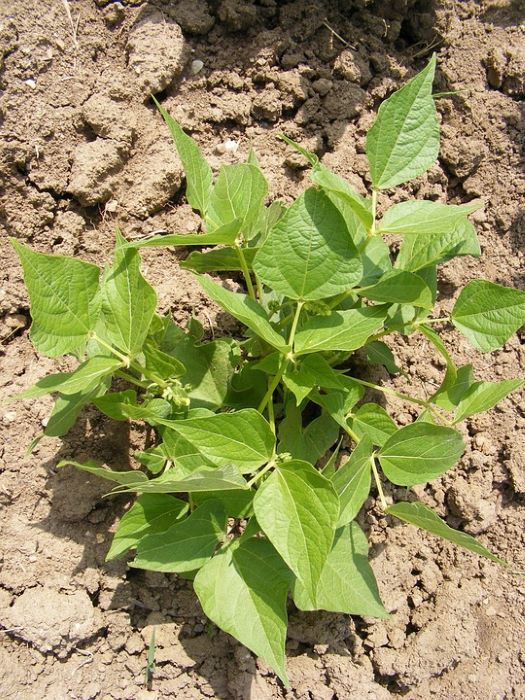
Another common reason for the decline of bean plants relates to the soil in which they are planted. Incorrect soil conditions can affect the health and survival of bean plants.
The soil serves as the foundation for a plant’s growth, providing essential nutrients, and water-holding capacity. When the soil conditions are not suitable for bean plants, it can lead to their deterioration and even death.
Bean plants thrive in well-draining soil enriched with compost and organic matter. The soil should have a pH level between 6 and 7. If the soil conditions are wrong for growing beans, your plant will start turning yellow, and will eventually die.
Solutions: If you think your bean plant is dying because of your soil conditions, the first thing you need to do is invest in a soil monitor. The soil gauge will tell you what your soil pH level is, if it is below 6, and therefore too acidic, you can add lime. If your soil has a pH level of above 7, you can add more compost or soil acidifier to correct it.
If you aren’t sure what type of soil you have, you can run it through your fingers. If you roll the soil in your hands and it smears slightly and gets sticky when wet, you have clay soil. If the soil feels gritty and passes through your fingers easily, your soil is sandy. The best way to correct your soil type is to add more organic material.
3. Too much or Too Little Sunlight
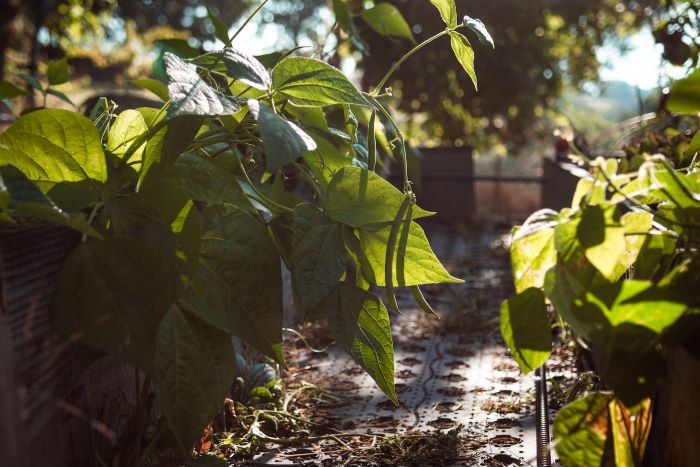
Sunlight plays a crucial role in the growth and development of bean plants. However, too much or too little sunlight can have adverse effects on your bean plants and, in extreme cases, lead to their death.
Beans need sunlight to photosynthesize, which is critical for the plant’s energy production. Too much sunlight, however, can damage your plant, rather than help it.
If your beans are getting too much sunlight, they will start to dehydrate and burn. The leaves will become dry and brittle, while the edges will turn brown.
In the same way that too much sunlight can damage your plant, Insufficient sunlight can hinder its ability to produce energy and grow. If your beans aren’t getting enough sunlight, the leaves will start to turn yellow.
Solutions: Bean plants need between 6 and 8 hours of sunlight per day. If your plant is getting too much sun, the best thing to do is protect it, by covering it with shade cloth.
If your bean plant is getting too little sunlight, look around your garden and see if any nearby trees or plants can be pruned to give your plant more sunlight. And in the future, make sure to plant your beans where they will receive adequate sunlight.
4. Lack of Nutrients
A lack of nutrients in the soil could be the reason why your bean plant is dying as nutrients are essential for plant growth. Bean plants need a balanced mix of nutrients which they can get through the application of fertilizer. Too few and the plant will start to turn yellow and die, too many nutrients will also kill your plant, as it burns the roots.
Nutrient deficiencies in bean plants will present themselves on the leaves, which will turn yellow while the veins of the leaves will remain green.
Solutions: The type of fertilizer your bean plants need, depends on the nutrients that are lacking in your soil. You can use a home testing kit to see what you need to add. As a general rule, bean plants should be fertilized once a month using a balanced fertilizer. I like this organic fertilizer.
5. Extreme Temperatures
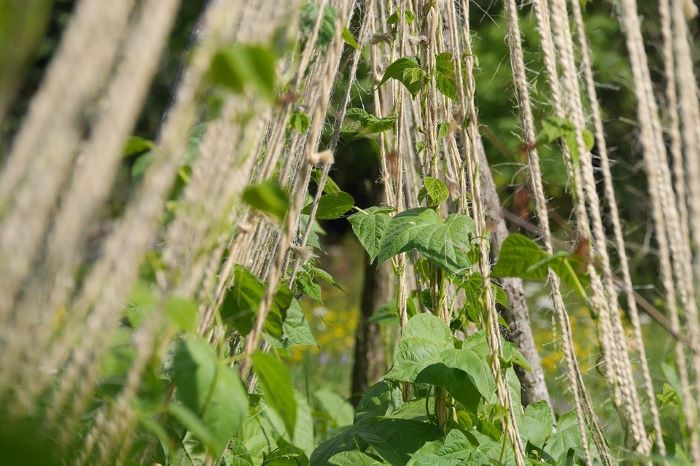
Extreme temperatures, whether excessively hot or cold, can have a negative impact on the health and survival of bean plants. Bean plants thrive in temperatures ranging between 68 and 86 °F (20-30 °C).
Bean plants are sensitive to temperature fluctuations, and when exposed to extreme conditions, their physiological processes can be disrupted, leading to potential harm and even death.
If the weather is too hot, your bean plant will start to experience drought-like conditions. This leads to dehydration and sunburn, where your plant’s leaves will start to turn yellow, but will look scorched.
If the temperatures drop below 68 degrees Fahrenheit (20 °C) your bean plant’s growth will slow, it will start to yellow and die.
Solutions: If your garden is experiencing high temperatures, you will need to combat its effects. You can do this by covering your bean plants with shade cloth during the hottest part of the day.
It is important to remember that when the temperature rises, any water in the soil around your plant will evaporate much quicker. This means you will need to water your bean plants more during warmer weather. I always check the soil around my plants twice a day during a heat wave, at around midday and in the late afternoon.
If the temperatures are cooler than your bean plant likes, you can protect them with frost covers.
6. Pests
Pests can pose a significant threat to bean plants, as they can devour foliage, disrupt plant growth, and even lead to the death of bean plants if left unchecked. Three of the most damaging bean pests are aphids, stink bugs, and spider mites.
Aphids
Aphids are a common sap-sucking garden menace that can cause stunted growth, yellowing, and necrotic spots on your plant’s leaves. These tiny, soft-bodied little insects can be found on the stems and undersides of your bean plant leaves.
Although tiny, aphids are responsible for spreading one of the most destructive viral infections your bean plant can catch, the mosaic virus.
Solutions: If aphids are attacking your bean plants, the first thing you need to do is spray your plant with the garden hose. Once you have dislodged the little pests, spray your plant with insecticidal soap, which is safe to use in the organic garden.
Stink Bugs
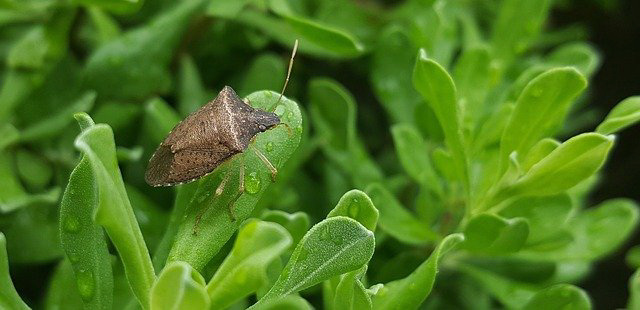
Stink Bugs are a type of insect that is named for the foul-smelling odor they emit as a defense mechanism when threatened or disturbed. They are sap-sucking, shield-shaped pests that can pass on harmful diseases to your bean plants through their feeding habits.
When they feed on bean plants, they puncture the plant’s leaves, stems, and pods, causing damage that can lead to wilting and yellowing. Where the insect’s mouthpiece pierces your plant, you will notice a small yellow area, while the rest of the leaf or pod will remain green. If they have passed on a disease to your plant, the pods will start to decay.
Solutions: You can control stink bugs by spraying them directly with a soapy water spray or neem oil.
To lure the stink bugs away from your plants you can try using a pheromone spray outside of your garden. Additionally, always keep your garden free from weeds and debris, which are places where stink bugs like to hide.
Spider Mites
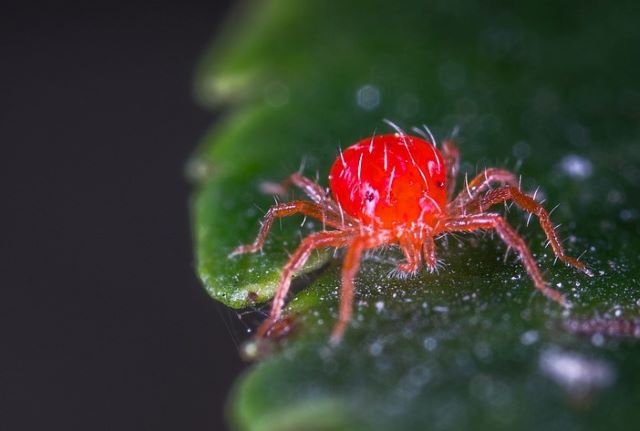
Spider mites are tiny arachnids that feed on your bean plant’s sap. As spider mites feed on bean plants, they leave behind a trail of damage.
Affected leaves may exhibit a speckled appearance, turn yellow, and eventually become dry and brittle and drop from your plant. Severe infestations can cause leaves to turn brown or bronze.
In addition to feeding damage, spider mites often produce fine silk-like webbing on the undersides of leaves.
Solutions: Getting rid of spider mites is similar to how you would handle an aphid problem. The first thing you will need to do is blast your bean plant with the garden hose. Once you have dislodged as many of the mites as possible, you can further treat the infestation by spraying your plant with neem oil.
7. Diseases
Diseases are a significant threat. Bean plant diseases can strike swiftly, causing leaf discoloration, and the death of your plant. The most common and problematic diseases that can affect your plant are bacterial and halo blight, and the viral mosaic virus.
Bacterial & Halo Blight
Bacterial blight and halo blight are two destructive bacterial diseases that can severely affect bean plants.
Both bacterial blight and halo blight can cause similar symptoms in bean plants. These include water-soaked lesions on leaves, stems, and pods, which can later turn brown or black. Around the lesions you will see lesions coalesce, which is when discoloration links the lesions on the leaf, giving it a burnt look.
Infected leaves may also exhibit a characteristic halo-like appearance around the lesions, giving rise to the name “halo blight.”
Solution: You can try to control the spread and speed of both bacterial and halo blight by using copper fungicide on your plants. However, both types of blight are not easy to control and can not be cured once they have taken hold of your bean plants. The best thing to do is to remove and destroy your infected plants.
Mosaic Virus
Two types of mosaic virus can affect your plants, bean common mosaic virus (BCMV) and bean yellow mosaic virus (BYMV). Both present with similar symptoms, namely a yellow and green mosaic pattern on your bean plant’s leaves. Additionally, the leaves of your plant may start to roll up and its growth will be stunted.
BYMV differs slightly from BCMV in that your bean plant may present with yellow spots on its leaves in addition to the mosaic pattern. Both strains of the virus are spread through the feeding habits of aphids.
Solutions: Sadly, there is no cure for mosaic virus. Once your bean plant has been infected with either strain of the virus, it can not be saved and will need to be destroyed. You will also have to rotate your crops moving forward to ensure that your next crop does not become infected.
The best thing you can do is protect your bean plants from becoming infected with the virus by controlling aphid infestations.
Related:
